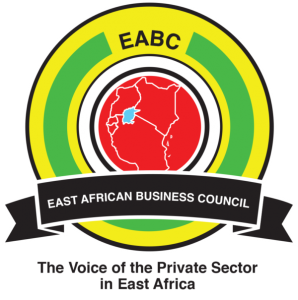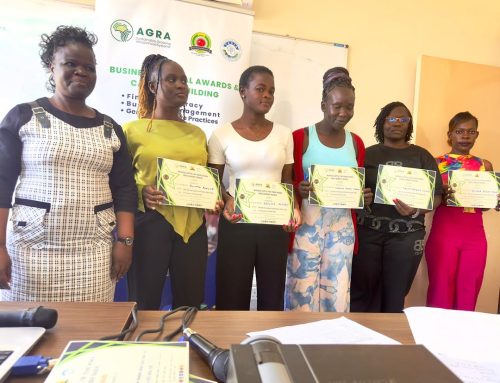Arusha, Tanzania, Friday 2nd August 2024 – The East African Business Council (EABC) Vice Chairperson Simon Kaheru has urged the Government of EAC Partner States to uniformly apply the East African Community (EAC) Common External Tariff (CET) to enhance intra-EAC trade, investment and regional value chain.
Officiating the EABC webinar focusing on “Post-Budget 2024/25 – Disparities in the Application of EAC-CET and Impact on EAC Businesses,” organized in partnership with the EAC Secretariat and RSM Eastern Africa, Mr. Simon Kaheru elaborated that the EAC-CET is an essential instrument of the EAC Customs Protocol. It facilitates intra-trade and creates a level playing field in the EAC Customs Territory by providing a uniform tariff structure for products imported outside the EAC bloc. However, the Stays of Applications and Country-Specific Duty Remissions continued to be applied, diluting its effectiveness and distorting the market.
He stated that there is a need for public-private dialogues and private-to-private partnerships to drive the uniform implementation of the EAC-CET in order to boost intra trade.
In his remarks, Mr. Adrian Njau, Acting Executive Director of EABC, stated that the previous CET maximum rate was a 3-band structure with a maximum tariff rate of 25%. The current EAC-CET, successfully adopted in 2022, is a 4-band tariff structure with the maximum tariff rate of 35% that promotes value addition, regional value chain integration, intra-EAC trade, and safeguards products that are sufficiently produced in the region against similar imports outside the EAC bloc. He stated that, according to the EABC Analysis 2022, the EAC-CET maximum tariff of 35%, if implemented effectively will increase intra-EAC trade by $18.9 million and create 6,781 jobs.
In his presentation, Mr. Donald Tindamanyire, Principal Customs Officer Tariff and Valuation at the EAC Secretariat, stated that Partner States agreed to adopt 35% as the maximum tariff after analysis showed that it will increase revenue by 5.5%, boost intra-regional trade, reduce importation, promote value addition, attract FDI, and create employment opportunities for East Africans. The benefits are unlikely to be attained because of the non-uniform application of the agreed CET. Persistent stays of applications (SOA) and country-specific duty remissions, for example, in the 2024/25 financial year, there are 1,956 tariff lines under stays of applications. Uganda takes the lead with 901, followed by Kenya with 816, Rwanda with 116, Tanzania with 89, and Burundi with 24.
According to Mr. Tindamanyire, the SOAs were mainly on products that attracted a 25% import duty, accounting for 77% of all SOAs, followed by products that attract a 35% import duty, accounting for 25% of all SOAs. Categorization of SOAs by value chain sector shows cotton, textiles, and apparel take the lead with 621 tariff lines under SOA, followed by iron and steel, and agro-processing tariff lines in the financial year 2024/25.
Mr. Josphat Karanja, Manager of Tax Consulting at RSM Eastern Africa, explained that the lack of uniform application of the EAC-CET creates an unlevel playing field since production attracts different import duties across countries, distorting the market. The annual stay order applications, which are effective for only one year, lead to uncertainties for manufacturers and traders, thus affecting crucial business decisions. He said the EAC-CET was put in place to protect the common interests of various partner states through the protection of specific sectors. Lack of uniform application of the CET thus loses its intended objective.
The webinar convened over 100 industry leaders and government officials in the region. The industry leaders reemphasized the importance of the CET as central to driving intra-trade and called for political goodwill to ensure its uniform application. Other key recommendations include the need to build productive capacities in the region, harmonize private sector positions on CET, protect local industries, apply regional duty remission schemes to promote East African manufacturers, develop industrial infrastructure for priority value chains such as leather to promote value addition, continue creating awareness of the EAC-CET Version 2022 among both public and private stakeholders to achieve its objectives, promote dialogue between the private and public sectors to address emerging issues regarding the implementation of the EAC-CET, form a common position on the rate to be applied on products of economic importance, assess the impact of EAC-CET 2022 on FDI and inter/intra-regional investment, assess national and regional productive capacities, and address challenges leading to the constant application of SOAs, especially for the agro-processing, textile, and apparel sectors.





